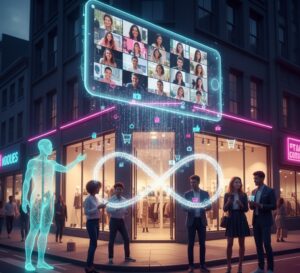Design Smarter: Generative AI Tools for UI Innovation
Published May 22, 2025
Marketing
Introduction:
What Is Generative UI?
Why Bother with Generative UI and Generative AI?
How to Use Generative AI in Your UI Design System
Pitfalls to Avoid
The Future of Generative UI Design
Alright, design friends. Let’s talk about something that’s buzzing louder than your team Slack channel on launch day: Generative AI. Whether you’re a seasoned UX designer or just starting out and still figuring out what Figma does, there’s one thing we can all agree on, the design world is changing fast.
And what’s leading the charge? Say it with me: Generative UI!!!.
Now before you picture a robot sitting at a desk wireframing your next app (with a tiny coffee mug and a Miro board), let’s unpack what this means, how to use it, and why it might just save you from endless pixel-pushing marathons.
What Is Generative UI?
In simple terms, Generative UI is UI that’s built or assisted by generative AI. Think of it like having a design intern who doesn’t sleep, works at lightning speed, and only complains when your prompts are vague. Generative UI design uses AI to generate layouts, components, styles, and even full-on design systems. It turns your ideas (or even your half-baked napkin sketches) into working prototypes in seconds. Basically, it’s design magic. But not the pull-a-rabbit-out-of-a-hat kind. It’s the “pull-a-user-flow-out-of-a-prompt” kind.Why Bother with Generative UI and Generative AI?
Let’s face it: designing a button for the 273rd time is not the thrill ride it used to be. Generative UI and generative AI let you focus on higher-order problems like improving usability or convincing your PM that "Add to Cart" should be orange, not blue. Here are a few reasons why designers are jumping on the generative bandwagon:- Speed: Need a dozen dashboard variations before lunch? Done.
- Consistency: AI doesn’t forget padding rules. Ever.
- Inspiration: Stuck in a creative rut? Ask the AI.
- Efficiency: Free up your brain for actual design thinking.
How to Use Generative AI in Your UI Design System
So how do you actually use all this futuristic power without making your design system look like it was created by a caffeinated toddler? Let’s break it down.1. Start with Patterns, Not Pixels
Don’t tell the pixels, but patterns are where the magic starts. Feed your generative UI design tool with examples of your design language. This includes buttons, cards, modals, etc. You can use tools like Galileo AI, Uizard, or Locofy to generate designs that match your brand style. Use the 6-3-1 rule in UI design:- 6 variations of a layout
- Pick 3 that feel right
- Choose 1 and refine the heck out of it
2. Feed It Smart Prompts
Generative AI is only as good as your prompt. So no, "make it pop" doesn’t count. Try something like, "Design a mobile dashboard for a fitness app using dark mode, minimalist style, and bold typography. Include step count and heart rate widgets." You’ll get results that look like you spent hours in Figma — but it only took 30 seconds and one cup of coffee.3. Iterate Like a Pro
AI gives you options fast. Your job? Be the ruthless creative director. Use the 6-3-1 rule in UI design again to narrow down. Tweak spacing, edit colors, and ensure accessibility standards are met. (Because color contrast is still a thing, even in the future.) Also, don’t be afraid to ask the AI to regenerate variations. Sometimes, the first idea isn’t the best one. Just like in real life.4. Use Free Generative UI Examples
Learning is easier with examples. And luckily, the internet is full of UI design AI free generative UI examples.Pitfalls to Avoid
Generative UI and generative AI aren’t perfect. Neither is your laptop battery. Here are a few things to watch for:- Overdesigning: AI sometimes adds 17 shadows when one will do.
- Inconsistency: Make sure generated components align with your design tokens.
- Creativity block: Yes, really. Too many options can freeze you. Be selective.
- Dependence: Don’t rely solely on AI. Use it to enhance your creativity, not replace it.
The Future of Generative UI Design
The future is bright. And oddly efficient — like your overachieving friend who meal preps, runs marathons, and still makes it to every design sync on time. As more tools integrate generative UI features, we’ll see:- Smarter handoffs to devs
- Real-time user testing insights
- Dynamic UI generation based on user data
- Better accessibility baked in by default



 Let’s talk
Let’s talk